#Dal McKennon
Text
On August 17, 2023, Rifftrax performed their 34th Live Event riffing the 1980's BMX film "Rad". Michael J Nelson, Kevin Murphy and Bill Corbett also riffed on two Gumby "Adventures" ("The Witty Witch" and "Hidden Valley") . Rad star Bill Allen attended the event at the theater the event was broadcast from. ("Rifftrax Live: Rad", Rifftrax Event)
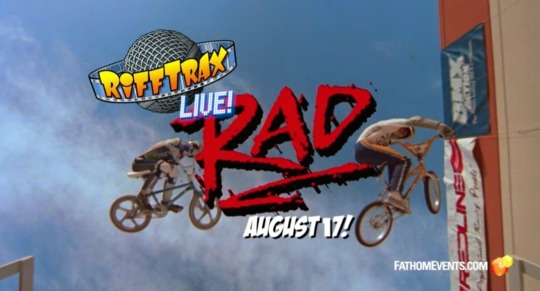
#nerds yearbook#real life event#august#2023#b movie#rifftrax#rifftrax live#mike nelson#michael j nelson#kevin murphy#bill corbett#bart conner#rad#mst3k#mystery science theater 3000#gumby#the gumby show#art clokey#dal mckennon#pokey#bill allen#talia shire#lori loughlin#bmx#ray walston#jack weston
26 notes
·
View notes
Text

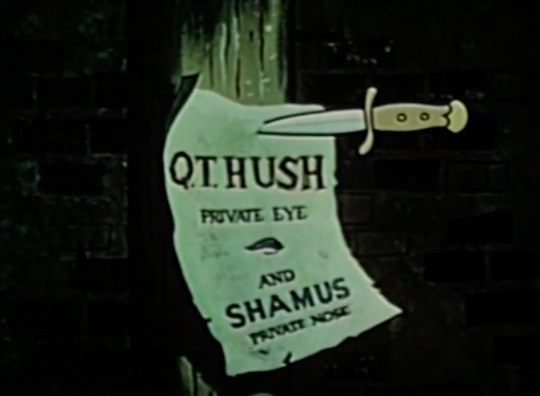

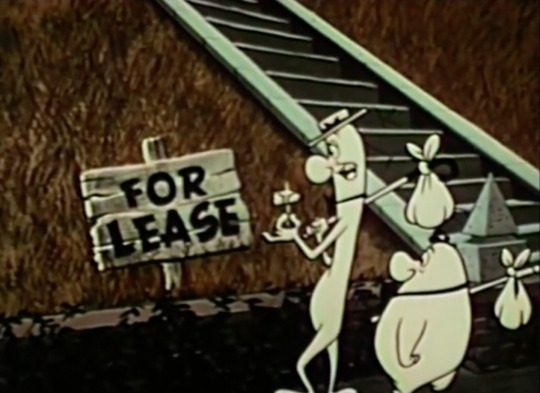





youtube
QT Hush (1960): Ghost Busters
18 notes
·
View notes
Text
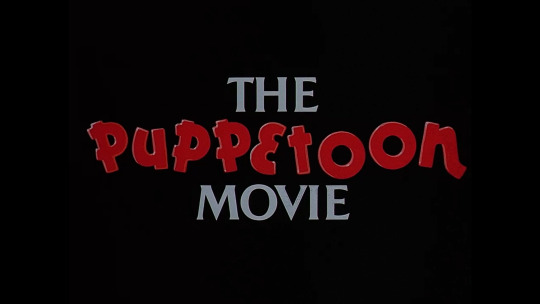
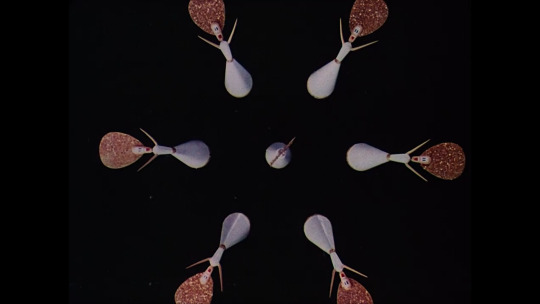
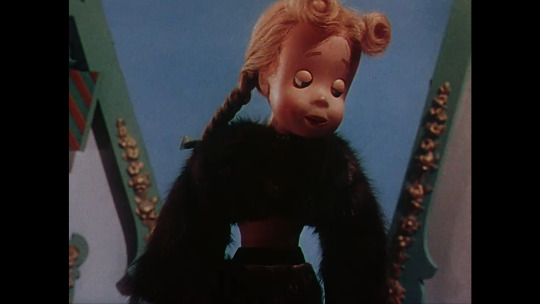

youtube
The Puppetoon Movie (1987)
My rating: 4/10
So yeah, this is basically an anthology of old cartoons. The framing device is nonsensical and saccharine in a way that would make Disney blush (culminating in a bizarre bit where various advertising mascots appear out of nowhere to go "thank you, George Pal" into the camera), and while the shorts themselves are technically extremely impressive, most of them are also incredibly racist, even for the time.
3 notes
·
View notes
Photo
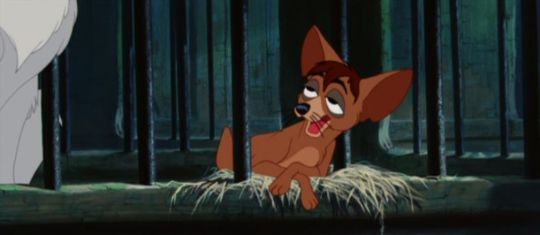


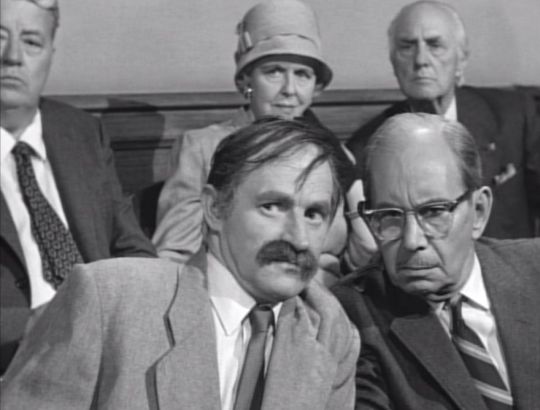

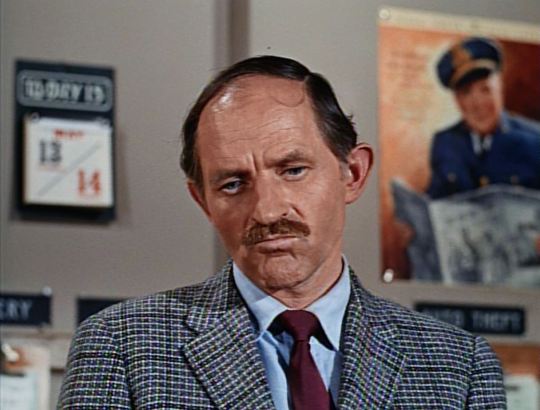
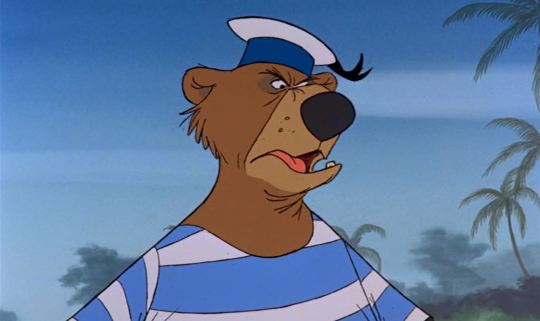

Dallas McKennon has a long list of small parts in Disney films, both on screen and as a voice actor. He also voiced characters in Disney park attractions.
14 notes
·
View notes
Text
Watching: How the Grinch Stole Christmas! (1966 TV movie)
1 note
·
View note
Photo
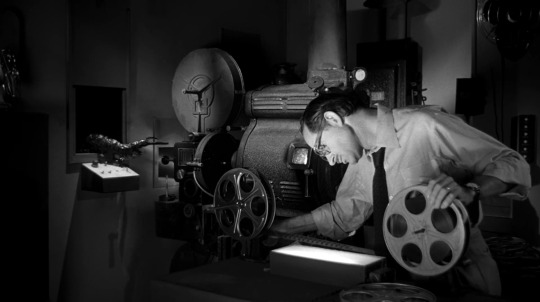
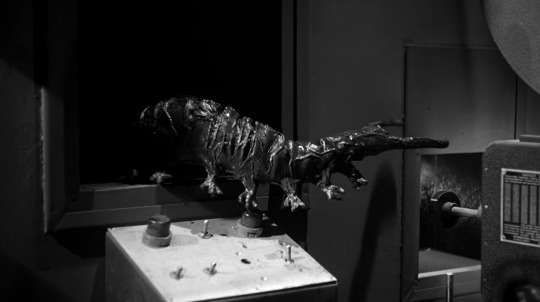
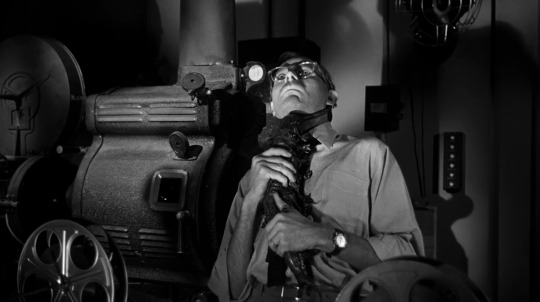

The Tingler | William Castle | 1959
Dal McKennon
45 notes
·
View notes
Photo







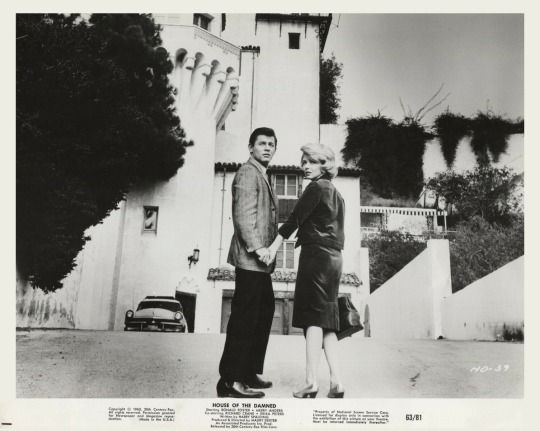
House of the Damned (1963) Maury Dexter
May 11th 2021
#house of the damned#1963#maury dexter#ron foster#merry anders#richard crane#erika peters#dal mckennon
3 notes
·
View notes
Photo
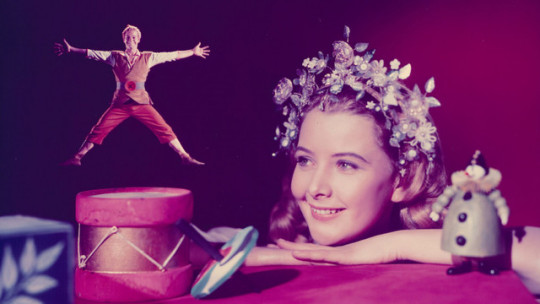
Today's review on MyOldAddiction.com, Tom Thumb by #GeorgePal starring #RussTamblyn, "brings the Grimm Brother's fairy tale to delightful life in this colourful comedic fantasy" GEORGE PAL Bil's rating (out of 5): BBB.5. United Kingdom/USA, 1958. Galaxy Pictures Limited…
#Academy Award 1958#Alan Young#Bernard Miles#Dal McKennon#Douglas Gamley#Elliot Scott#Frank Clarke#Galaxy Pictures Limited#George Pal#Georges Perinal#Golden Globe 1958#Ian Wallace#Jacob Grimm#Jessie Matthews#June Thorburn#Ken Jones#Ladislas Fodor#Olga Lehmann#Peter Bull#Peter Butterworth#Peter Sellers#Russ Tamblyn#Stan Freberg#Terry-Thomas#United Kingdom#Wilhelm Grimm
0 notes
Text
Dal McKennon & James Baskett - Walt Disney's Songs And Stories Of Uncle Remus [1957; Disneyland]

Featuring audio pulled from Disney’s perma-vaulted Song of the South film, this record presents the songs alongside stories told by the character of Uncle Remus. While the songs are folksy and corny, but generally decent, the stories feature such overblown dialects as to induce literal cringing. The “I iz”s and similar fare find their way into the songs from time to time, but awkward as that is, it doesn’t compare to the queasily simpering tone of the voice acting. The patina of racism overwhelms what quality there is to the songs and story-telling, making this feel more like an artifact from the early ‘20s than something produced halfway through the 20th century.
Here’s the original cover art.

0 notes
Photo

The Tingler - William Castle 1959
5 notes
·
View notes
Photo

Sceencaps || Sleeping Beauty (1959)
GALLERY LINK : [x]
Quality : BluRay Screencaptures
Amount : 1728 files
Resolution : 1920x800px
-Please like/reblog if taking!
-Please credit grande_caps/kissthemgoodbye!
#sleeping beauty#disneyedit#sleepingbeautyedit#mary costa#bill shirley#eleanor audley#verna felton#barbara luddy#barbara jo allen#bill thompson#taylor holmes#bob amsberry#candy candido#pinto colvig#rosa crosby#dal mckennon#marvin miller#thurl ravenscroft#capped by randomkiwibirds
5 notes
·
View notes
Photo

Yes, his autograph is part of my character Actor autograph collection.
I found this extensive biography online.
Lionel Jay Stander (January 11, 1908 – November 30, 1994) was an American actor in films, radio, theater, and television.
Lionel Stander was born in The Bronx, New York, to Russian-Jewish immigrants, the first of three children.
According to newspaper interviews with Stander, as a teenager, he appeared in the silent film MEN OF STEEL (1926), perhaps as an extra, since he is not listed in the credits.
During his one year at the University of North Carolina at Chapel Hill, he appeared in the student productions The Muse of the Unpublished Writer, and The Muse and the Movies: A Comedy of Greenwich Village.
Stander's acting career began in 1928, as Cop and First Fairy in Him by E. E. Cummings, at the Provincetown Playhouse. He claimed that he got the roles because one of them required shooting craps, which he did well, and a friend in the company volunteered him. He appeared in a series of short-lived plays through the early 1930s, including The House Beautiful, which Dorothy Parker famously derided as "the play lousy".
In 1932, Stander landed his first credited film role in the Warner-Vitaphone short feature IN THE DOUGH (1932), with Fatty Arbuckle and Shemp Howard. He made several other shorts, the last being THE OLD GREY MAYOR (1935) with Bob Hope in 1935. That same year, he was cast in a feature, Ben Hecht's THE SCOUNDREL (1935), with Noël Coward. He moved to Hollywood and signed a contract with Columbia Pictures. Stander was in a string of films over the next three years, appearing most notably in Frank Capra's MR. DEEDS GOES TO TOWN (1936) with Gary Cooper, MEET NERO WOLFE (1936) playing Archie Goodwin, THE LEAGUE OF FRIGHTENED MEN (1937), and A STAR IS BORN (1937) with Janet Gaynor and Fredric March.
Stander's distinctive rumbling voice, tough-guy demeanor, and talent with accents made him a popular radio actor. In the 1930s and 1940s, he was on The Eddie Cantor Show, Bing Crosby's KMH show, the Lux Radio Theater production of A Star Is Born, The Fred Allen Show, the Mayor of the Town series with Lionel Barrymore and Agnes Moorehead, Kraft Music Hall on NBC, Stage Door Canteen on CBS, the Lincoln Highway Radio Show on NBC, and The Jack Paar Show, among others.
In 1941, he starred in a short-lived radio show called The Life of Riley on CBS, no relation to the radio, film, and television character later made famous by William Bendix. Stander played the role of Spider Schultz in both Harold Lloyd's film THE MILKY WAY (1936) and its remake ten years later, THE KID FROM BROOKLYN (1946), starring Danny Kaye. He was a regular on Danny Kaye's zany comedy-variety radio show on CBS (1946–1947), playing himself as "just the elevator operator" amidst the antics of Kaye, future Our Miss Brooks star Eve Arden, and bandleader Harry James.
Also during the 1940s, he played several characters on The Woody Woodpecker and Andy Panda animated theatrical shorts, produced by Walter Lantz. For Woody Woodpecker, he provided the voice of Buzz Buzzard, but was blacklisted from the Lantz studio in 1951 and was replaced by Dal McKennon.
Strongly liberal and pro-labor, Stander espoused a variety of social and political causes and was a founding member of the Screen Actors Guild. At a SAG meeting held during a 1937 studio technicians' strike, he told the assemblage of 2000 members: "With the eyes of the whole world on this meeting, will it not give the Guild a black eye if its members continue to cross picket lines?" (The NYT reported: "Cheers mingled with boos greeted the question.") Stander also supported the Conference of Studio Unions in its fight against the Mob-influenced International Alliance of Theatrical Stage Employees (IATSE). Also in 1937, Ivan F. Cox, a deposed officer of the San Francisco longshoremen's union, sued Stander and a host of others, including union leader Harry Bridges, actors Fredric March, Franchot Tone, Mary Astor, James Cagney, Jean Muir, and director William Dieterle. The charge, according to Time magazine, was "conspiring to propagate Communism on the Pacific Coast, causing Mr. Cox to lose his job".
In 1938, Columbia Pictures head Harry Cohn allegedly called Stander "a Red son of a bitch" and threatened a US$100,000 fine against any studio that renewed his contract. Despite critical acclaim for his performances, Stander's film work dropped off drastically. After appearing in 15 films in 1935 and 1936, he was in only six in 1937 and 1938. This was followed by just six films from 1939 through 1943, none made by major studios, the most notable being GUADALCANAL DIARY (1943).
Stander was among the first group of Hollywood actors to be subpoenaed before the House Un-American Activities Committee (HUAC) in 1940 for supposed Communist activities. At a grand jury hearing in Los Angeles in August 1940—the transcript of which was shortly released to the press—John R. Leech, the self-described former "chief functionary" of the Communist Party in Los Angeles, named Stander as a CP member, along with more than 15 other Hollywood notables, including Franchot Tone, Humphrey Bogart, James Cagney, Clifford Odets, and Budd Schulberg. Stander subsequently forced himself into the grand jury hearing, and the district attorney cleared him of the allegations.
Stander appeared in no films between 1944 and 1945. Then, with HUAC's attention focused elsewhere due to World War II, he played in a number of mostly second-rate pictures from independent studios through the late 1940s. These include Ben Hecht's SPECTER OF THE ROSE (1946); the Preston Sturges comedy THE SIN OF HAROLD DIDDLEBOCK (1947) with Harold Lloyd; and TROUBLE MAKERS (1948) with The Bowery Boys. One classic emerged from this period of his career, the Preston Sturges comedy UNFAITHFULLY YOURS (1948) with Rex Harrison.
In 1947, HUAC turned its attention once again to Hollywood. That October, Howard Rushmore, who had belonged to the CPUSA in the 1930s and written film reviews for the Daily Worker, testified that writer John Howard Lawson, whom he named as a Communist, had "referred to Lionel Stander as a perfect example of how a Communist should not act in Hollywood." Stander was again blacklisted from films, though he played on TV, radio, and in the theater.
In March 1951, actor Larry Parks, after pleading with HUAC investigators not to force him to "crawl through the mud" as an informer, named several people as Communists in a "closed-door session", which made the newspapers two days later. He testified that he knew Stander, but did not recall attending any CP meetings with him.
At a HUAC hearing in April 1951, actor Marc Lawrence named Stander as a member of his Hollywood Communist "cell", along with screenwriter Lester Cole and screenwriter Gordon Kahn. Lawrence testified that Stander "was the guy who introduced me to the party line", and that Stander said that by joining the CP, he would "get to know the dames more" — which Lawrence, who did not enjoy film-star looks, thought a good idea. Upon hearing of this, Stander shot off a telegram to HUAC chair John S. Wood, calling Lawrence's testimony that he was a Communist "ridiculous" and asked to appear before the Committee, so he could swear to that under oath. The telegram concluded: "I respectfully request an opportunity to appear before you at your earliest possible convenience. Be assured of my cooperation." Two days later, Stander sued Lawrence for $500,000 for slander. Lawrence left the country ("fled", according to Stander) for Europe.
After that, Stander was blacklisted from TV and radio. He continued to act in theater roles and played Ludlow Lowell in the 1952-53 revival of Pal Joey on Broadway and on tour.
Two years passed before Stander was issued the requested subpoena. Finally, in May 1953, he testified at a HUAC hearing in New York, where he made front-page headlines nationwide by being uproariously uncooperative, memorialized in the Eric Bentley play, Are You Now or Have You Ever Been. The New York Times headline was "Stander Lectures House Red Inquiry." In a dig at bandleader Artie Shaw, who had tearfully claimed in a Committee hearing that he had been "duped" by the Communist Party, Stander testified,
"I am not a dupe, or a dope, or a moe, or a schmoe...I was absolutely conscious of what I was doing, and I am not ashamed of anything I said in public or private."
An excerpt from that statement was engraved in stone for "The First Amendment Blacklist Memorial" by Jenny Holzer at the University of Southern California.
Other notable statements during Stander's 1953 HUAC testimony:
- "[Testifying before HUAC] is like the Spanish Inquisition. You may not be burned, but you can't help coming away from a little singed."
- "I don't know about the overthrow of the government. This committee has been investigating 15 years so far, and hasn't found one act of violence."
- "I know of a group of fanatics who are desperately trying to undermine the Constitution of the United States by depriving artists and others of life, liberty, and the Pursuit of Happiness without due process of law ... I can tell names and cite instances and I am one of the first victims of it. And if you are interested in that and also a group of ex-fascists and America-Firsters and anti-Semites, people who hate everybody including Negroes, minority groups and most likely themselves ... and these people are engaged in a conspiracy outside all the legal processes to undermine the very fundamental American concepts upon which our entire system of democracy exists."
- "...I don't want to be responsible for a whole stable of informers, stool pigeons, and psychopaths and ex-political heretics, who come in here beating their breast and say, 'I am awfully sorry; I didn't know what I was doing. Please--I want absolution; get me back into pictures.'"
- "My estimation of this committee is that this committee arrogates judicial and punitive powers which it does not possess."
Stander was blacklisted from the late 1940s until 1965; perhaps the longest period.
After that, Stander's acting career went into a free fall. He worked as a stockbroker on Wall Street, a journeyman stage actor, a corporate spokesman—even a New Orleans Mardi Gras king. He didn't return to Broadway until 1961 (and then only briefly in a flop) and to film in 1963, in the low-budget THE MOVING FINGER (although he did provide, uncredited, the voice-over narration for the 1961 noir thriller BLAST OF SILENCE.)
Life improved for Stander when he moved to London in 1964 to act in Bertolt Brecht's Saint Joan of the Stockyards, directed by Tony Richardson, for whom he'd acted on Broadway, along with Christopher Plummer, in a 1963 production of Brecht's The Resistible Rise of Arturo Ui. In 1965, he was featured in the film PROMISE HER ANYTHING. That same year Richardson cast him in the black comedy about the funeral industry, THE LOVED ONE, based on the novel by Evelyn Waugh, with an all-star cast including Jonathan Winters, Robert Morse, Liberace, Rod Steiger, Paul Williams, and many others. In 1966, Roman Polanski cast Stander in his only starring role, as the thug Dickie in CUL-DE-SAC, opposite Françoise Dorléac and Donald Pleasence.
Stander stayed in Europe and eventually settled in Rome, where he appeared in many spaghetti Westerns, most notably playing a bartender named Max in Sergio Leone's ONCE UPON A TIME IN THE WEST. He played the role of the villainous mob boss in Fernando Di Leo's 1972 poliziottescho thriller CALIBER 9. In Rome he connected with Robert Wagner, who cast him in an episode of It Takes a Thief that was shot there. Stander's few English-language films in the 1970s include THE GANG THAT COULDN'T SHOOT STRAIGHT (1971) with Robert De Niro and Jerry Orbach, Martin Scorsese's NEW YORK, NEW YORK (1977), which also starred De Niro and Liza Minnelli, and Steven Spielberg's 1941 (1979).
Stander played a supporting role in the TV film Revenge Is My Destiny with Chris Robinson. He played a lounge comic modeled after the real-life Las Vegas comic Joe E. Lewis, who used to begin his act by announcing "Post Time" as he sipped his ever-present drink.
After 15 years abroad, Stander moved back to the U.S. for the role he is now most famous for: Max, the loyal butler, cook, and chauffeur to the wealthy, amateur detectives played by Robert Wagner and Stefanie Powers on the 1979–1984 television series Hart to Hart (and a subsequent series of Hart to Hart made-for-television films). In 1983, Stander won a Golden Globe Award for Best Supporting Actor – Series, Miniseries or Television Film.
In 1986, he became the voice of Kup in THE TRANSFORMERS: THE MOVIE. In 1991 he was a guest star in the television series Dream On, playing Uncle Pat in the episode "Toby or Not Toby". His final theatrical film role was as a dying hospital patient in THE LAST GOOD TIME (1994), with Armin Mueller-Stahl and Olivia d'Abo, directed by Bob Balaban.
Stander was married six times, the first time in 1932 and the last in 1972. All but the last marriage ended in divorce. He fathered six daughters (one wife had no children, one had twins).
Stander died of lung cancer in Los Angeles, California, in 1994 at age 86. He was buried in Glendale's Forest Lawn Memorial Park Cemetery.
3 notes
·
View notes
Text
Bedknobs and Broomsticks (1971) Review
Bedknobs and Broomsticks (1971) Review
During World War II in England Charlie, Carrie and Paul Rawlings are sent to live with Eglantine Price, who just happens to be an apprentice witch.
(more…)
View On WordPress
#1971#Adventure#Angela Lansbury#Animation#Arthur Gould-Porter#Bedknobs and Broomsticks#Ben Wrigley#Bob Holt#Bruce Forsyth#Cindy O’Callaghan#Comedy#Cyril Delevanti#Dal McKennon#David Tomlinson#Disney#Family#Ian Weighill#John Ericson#John Orchard#Lennie Weinrib#Manfred Lating#Reginald Owen#Review#Rick Traeger#Roddy McDowall#Roy Snart#Sam Jaffe#Sky Cinema#Tessie O&039;Shea
0 notes
Photo

Tom Thumb (1958)
George Pal is one of many European filmmakers who emigrated to the United States due to Nazism’s rise. Pal, along with his contemporaries, enriched American cinema. But where some of the most well-known figures of this European exodus were actors, directors, and writers, Pal – a Hungarian born György Pál Marczincsak – was an animator. Pal was not just some character artist or inbetweener working for Disney or Terrytoons or Warner Bros., but a self-employed director with his own line of stop-motion animated short films. He dubbed them Puppetoons – a series more popular in Europe than stateside – and Pal became one of the most honored animators of his time. His musical adaptation of Tom Thumb, released by Metro-Goldwyn-Mayer (MGM), would be the first time Pal acted as his own director and producer (Pal had just departed his longtime studio home of Paramount Pictures, seeking to make films with less corporate input). It is not a great directorial debut, but it is a testing ground of an individual with an unabashed love of the fantastical.
A lumberjack named Jonathan (Bernard Miles) is stopped from chopping down a tree by the Forest Queen (June Thorburn). Jonathan accedes to her request, only after being told a number of birds reside in the tree. As thanks for his compliance, the Forest Queen grants Jonathan and his wife, Anne (Jessie Matthews) three wishes. Jonathan and Anne waste their wishes, look forlornly at the child’s room for the child they never had, and Anne laments-wishes for a child – “even if he was no bigger than my thumb.” The day after, Tom (Russ Tamblyn) appears at the door, the size of a human’s thumb, and addresses the couple as his parents. The new parents take Tom in and raise him like their own son. But sinister machinations by scoundrels Ivan (Terry-Thomas) and Antony (Peter Sellers) are afoot in this vaguely European small town where lederhosen and Tyrolean hats are commonplace, and Tom, as one might imagine, becomes unwittingly involved in the villains’ schemes.
Tom Thumb is a live-action/stop-motion animation hybrid. For those familiar with live-action/animation hybrids, films like Mary Poppins (1964) or Pete’s Dragon (1977) come to mind. Films released by Disney set our expectations for movies like these, and this might be a little unfair to Tom Thumb – which confines its use of stop-motion animation to Tom’s bedroom and nowhere else. The introduction of the stop-motion effects are first seen in “Tom Thumb’s Tune”, recalling the handiwork seen in Pal’s Puppetoons. One wishes that more stop-motion animation could have been used, but a first-time director with MGM combined with hefty production design decisions and costs probably prevented Pal from exploring this smaller world as deeply as he could and should have.
As Tom is prancing across his bed/crib and elsewhere across the room, Pal mixes in human performers in costume with his animated characters. Here, Pal and art director Elliot Scott (1984′s Indiana Jones and the Temple of Doom, 1989′s Indiana Jones and the Last Crusade) decided that the set for Tom’s bedroom be scaled to one inch to one foot. So those oversized pencils, blocks, and other assorted playthings were all constructed for these scenes – imagine Arrietty (2010, Japan) if it was a live-action film and no CGI used – as well as miniatures used throughout (Bernard Miles and Jessie Matthews, among others, were filmed talking to a six-inch version of Russ Tamblyn; Tamblyn filmed his scenes alone). One of the benches Tamblyn, as Tom, dances on was thirty-five feet high and ninety feet long. To achieve the proper effects of shrinking Tamblyn to a half-foot included either the unconvincing use of green screen or, in collaboration with cinematographer Georges Périnal (1930′s Under the Roofs of Paris, 1948′s The Fallen Idol) and visual effects wizard Tom Howard (1968′s 2001: A Space Odyssey), the camera would be placed as far as ninety feet away from the action – either by moving it to the back walls of the soundstage or carving holes in the soundstage roof to shoot at the angles required for convincing proportionality.
Clocking in at just over a half-hour, Tom Thumb overextends the initial live-action sequence. Tamblyn, a trained dancer, is allowed several minutes after “Tom Thumb’s Tune” to dance to anachronistic music (big band jazz makes no sense in a setting that establishes itself as nineteenth century fictionalized and idealized Europe). Though musicals might be a personal favorite genre and I can appreciate some of the most complicated and lengthy dances sequences in cinematic history, something about Tom Thumb’s decision to add an ambitious dance sequence immediately after the conclusion of the title character’s song obliterates any sense of pacing that it had established in the opening minutes. Some of the banter between the dimwitted partners-in-crime Ivan and Antony will be funnier to children – making Terry-Thomas and Peter Sellers’ buffoonish characters as dangerous as they are hilarious. A romantic subplot between the Forest Queen and a character named Woody (Alan Young) is awkwardly introduced, serving the film for no apparent purpose other than to introduce some chaste kissing in a musical. Because, you know, there is an unwritten rule in pre-1960s American movie musicals that romance must be in the air.
Tom Thumb is based on an English folktale of the same name. Hungarian writer Ladislas Fodor contributed with a screenplay that feels like it was pieced together just for a quick paycheck. Overcomplicating folk tales and fairy tales usually results in dramatic bloat, but Tom Thumb is bloated even though it has not been overcomplicated. It is not a long film, yet scenes overstay their welcome and Pal’s movie feels than it should be. Regarding its status as a live-action/animated hybrid, it is easy to reconceptualize Pal’s version as hand-drawn animation from Disney or a feature composed entirely of stop-motion puppetry – several such films had already been produced and released in Europe; 1954′s Hansel and Gretel: An Opera Fantasy from RKO was the first entirely stop-motion feature from an American studio. But foremost, Pal wanted to display his and Russ Tamblyn’s talents, and that has informed how this film has been constructed and organized.
A large musical team including Douglas Gamley, Ken Jones, Peggy Lee, Fred Spielman, and Kermit Goell offer a beautiful musical score, even if the handful of songs are disappointing. “Tom Thumb’s Tune”, with music and lyrics by Peggy Lee, has the catchiest motif in the film, but squanders it with too many la-dee-dah-dee-dahs and doo-dee-doo-dee-doohs in its lyrics. “The Yawning Man” is the second-most interesting song in the soundtrack, employed primarily as comical relief as the Chinese doll Con-Fu-Shon (voiced by Dal McKennon frequent gibberish Chinese; interesting puppetry does not excuse a heavily stereotyped, forgettable character meant to introduce Tom to his new life and reassure him) tries to help Tom sleep. You may just yawn along to the Yawning Man yawn-singing his own song – if so, Fred Spielman (as composer) and Kermit Goell (as lyricist) did their jobs.
Tom Thumb is an ideal young children’s film, as I might imagine adults not versed in 1950s musicals to find the film monotonous, insufferable. Character motivations are not explained properly and almost everyone in the principal cast seem too innocent and too single-minded for their own good – Tom’s parents, however, are concerned caring parents in the few scenes we see of them (even if they drop off in the second half of the film).
Perhaps my biases towards movie musicals are showing because I found Tom Thumb charming, despite its numerous faults. Today, George Pal is best remembered for directing The Time Machine (1960) and 7 Faces of Dr. Lao (1964), as well as producing several 1950s science-fiction films. But the Puppetoons short films are where his film career began, allowing him to branch out into formative science-fiction cinema – a budding genre not taken seriously then – and integrating his stop-motion puppetry knowhow into live-action films. Of the feature films he directed, Tom Thumb is the most like a Puppetoon short. For those who are interested in the story of animation in cinema, that is reason enough to seek out Tom Thumb. The film, like George Pal’s earlier career, is a neglected chapter in a wondrous story.
My rating: 6.5/10
^ Based on my personal imdb rating. Half-points are always rounded down. My interpretation of that ratings system can be found here.
NOTE: This is the 600th full-length Movie Odyssey write-up I have published on tumblr.
#Tom Thumb#George Pal#Russ Tamblyn#Alan Young#Peter Sellers#Terry Thomas#June Thorburn#Bernard Miles#Jessie Matthews#Ladislas Fodor#Douglas Gamley#Ken Jones#Peggy Lee#Fred Spielman#Kermit Goell#Tom Howard#Georges Perinal#Elliot Scott#TCM#My Movie Odyssey
1 note
·
View note
Link
0 notes
